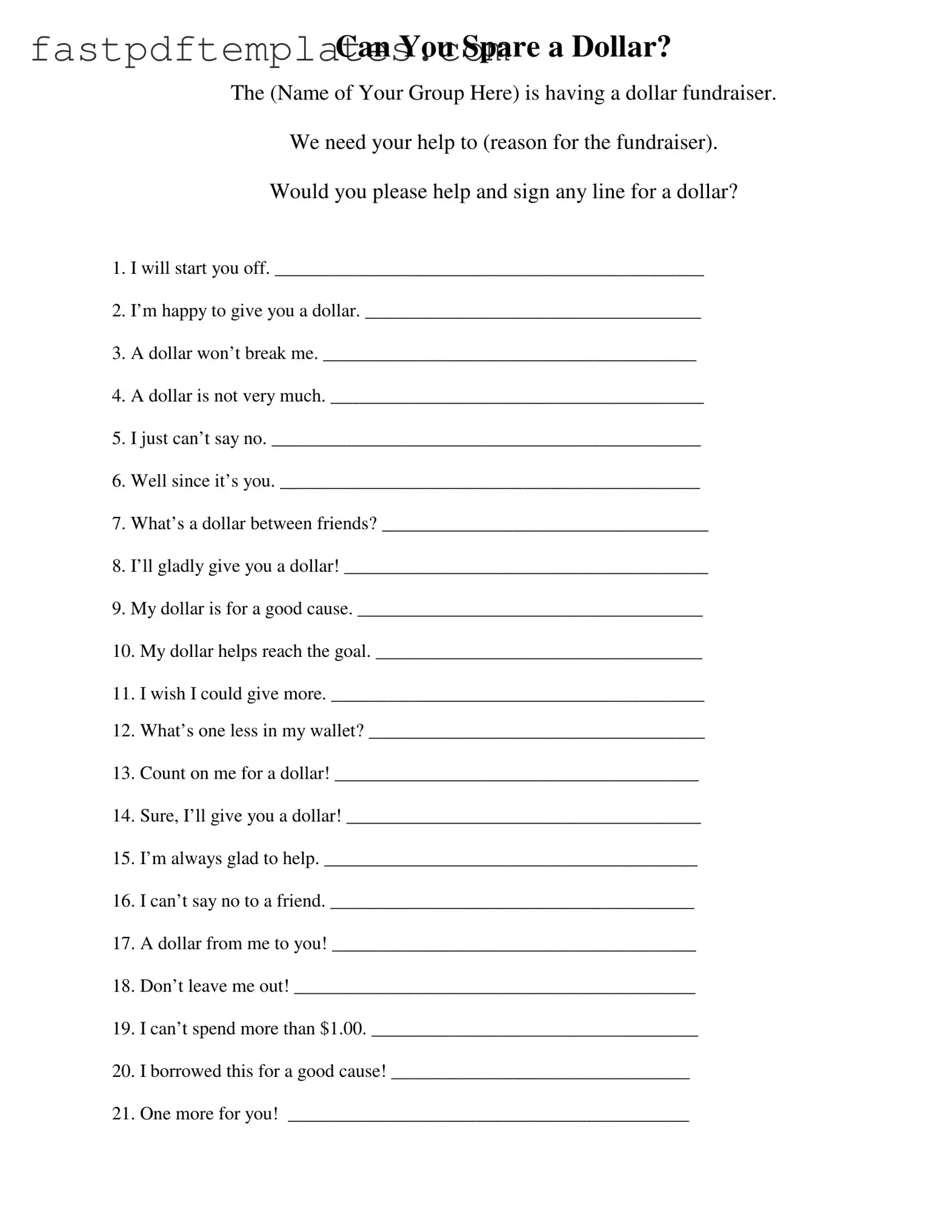Can You Spare a Dollar?
The (Name of Your Group Here) is having a dollar fundraiser.
We need your help to (reason for the fundraiser).
Would you please help and sign any line for a dollar?
1.I will start you off. ______________________________________________
2.I’m happy to give you a dollar. ____________________________________
3.A dollar won’t break me. ________________________________________
4.A dollar is not very much. ________________________________________
5.I just can’t say no. ______________________________________________
6.Well since it’s you. _____________________________________________
7.What’s a dollar between friends? ___________________________________
8.I’ll gladly give you a dollar! _______________________________________
9.My dollar is for a good cause. _____________________________________
10.My dollar helps reach the goal. ___________________________________
11.I wish I could give more. ________________________________________
12.What’s one less in my wallet? ____________________________________
13.Count on me for a dollar! _______________________________________
14.Sure, I’ll give you a dollar! ______________________________________
15.I’m always glad to help. ________________________________________
16.I can’t say no to a friend. _______________________________________
17.A dollar from me to you! _______________________________________
18.Don’t leave me out! ___________________________________________
19.I can’t spend more than $1.00. ___________________________________
20.I borrowed this for a good cause! ________________________________
21.One more for you! ___________________________________________
22.Will $1.00 help? ______________________________________________
23.I'm happy to give a buck! _______________________________________
24.Add this to your pile! __________________________________________
25.Congratulations, you’re #25! _____________________________________
Thank you for your support!
NAME: _____________________________________________
Money is due: ________________________________________
Please turn in to: ______________________________________
